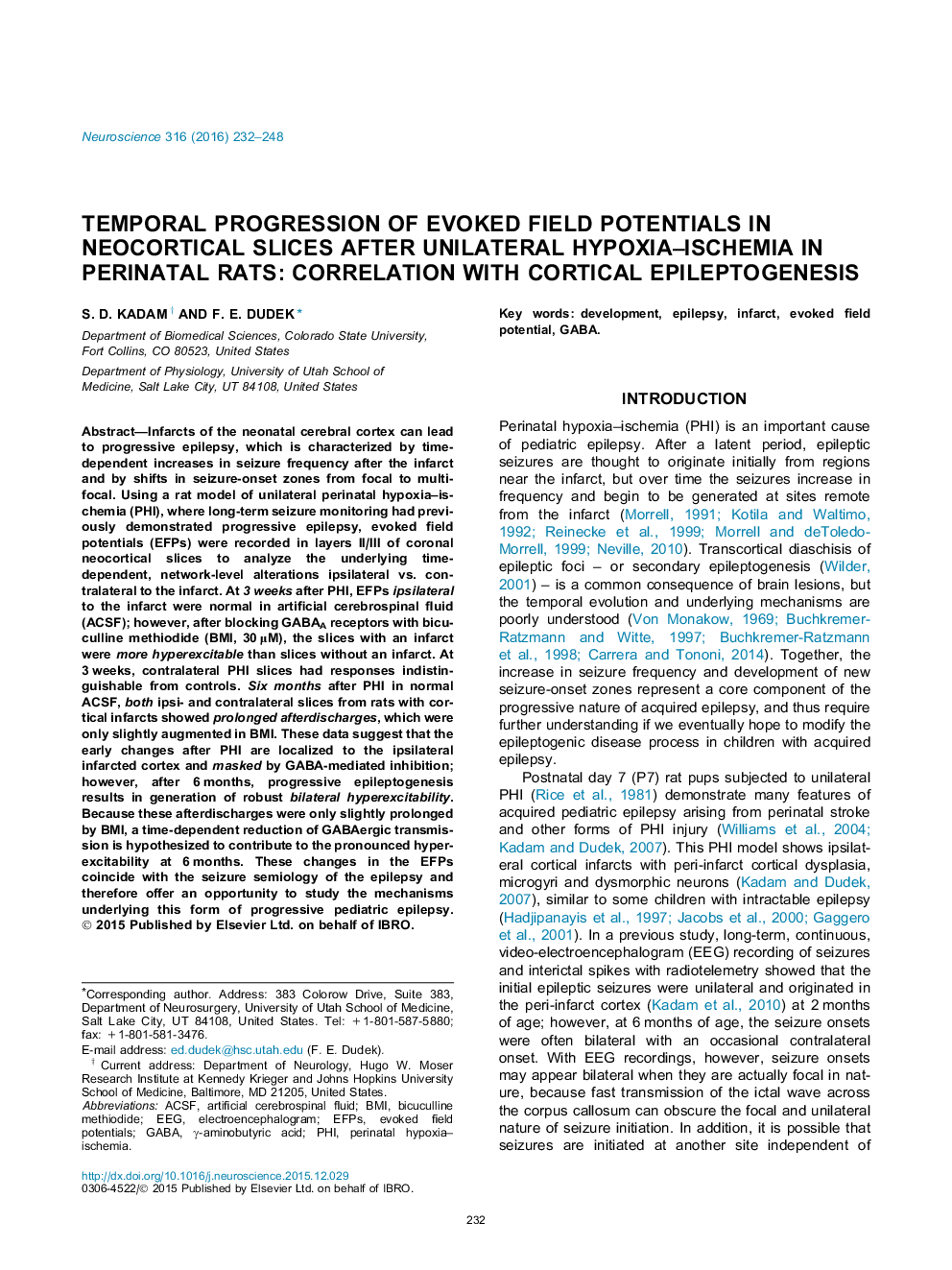| Article ID | Journal | Published Year | Pages | File Type |
|---|---|---|---|---|
| 6271424 | Neuroscience | 2016 | 17 Pages |
â¢Early epileptogenesis following unilateral cystic-PHI is focal.â¢Early focal hyperexcitability is masked by inhibition.â¢Late epileptogenesis detected in contralateral non-cystic cortex.â¢PHI without cystic lesions remains similar to controls.
Infarcts of the neonatal cerebral cortex can lead to progressive epilepsy, which is characterized by time-dependent increases in seizure frequency after the infarct and by shifts in seizure-onset zones from focal to multi-focal. Using a rat model of unilateral perinatal hypoxia-ischemia (PHI), where long-term seizure monitoring had previously demonstrated progressive epilepsy, evoked field potentials (EFPs) were recorded in layers II/III of coronal neocortical slices to analyze the underlying time-dependent, network-level alterations ipsilateral vs. contralateral to the infarct. At 3 weeks after PHI, EFPs ipsilateral to the infarct were normal in artificial cerebrospinal fluid (ACSF); however, after blocking GABAA receptors with bicuculline methiodide (BMI, 30 μM), the slices with an infarct were more hyperexcitable than slices without an infarct. At 3 weeks, contralateral PHI slices had responses indistinguishable from controls. Six months after PHI in normal ACSF, both ipsi- and contralateral slices from rats with cortical infarcts showed prolonged afterdischarges, which were only slightly augmented in BMI. These data suggest that the early changes after PHI are localized to the ipsilateral infarcted cortex and masked by GABA-mediated inhibition; however, after 6 months, progressive epileptogenesis results in generation of robust bilateral hyperexcitability. Because these afterdischarges were only slightly prolonged by BMI, a time-dependent reduction of GABAergic transmission is hypothesized to contribute to the pronounced hyperexcitability at 6 months. These changes in the EFPs coincide with the seizure semiology of the epilepsy and therefore offer an opportunity to study the mechanisms underlying this form of progressive pediatric epilepsy.
Graphical abstractDownload high-res image (105KB)Download full-size image
